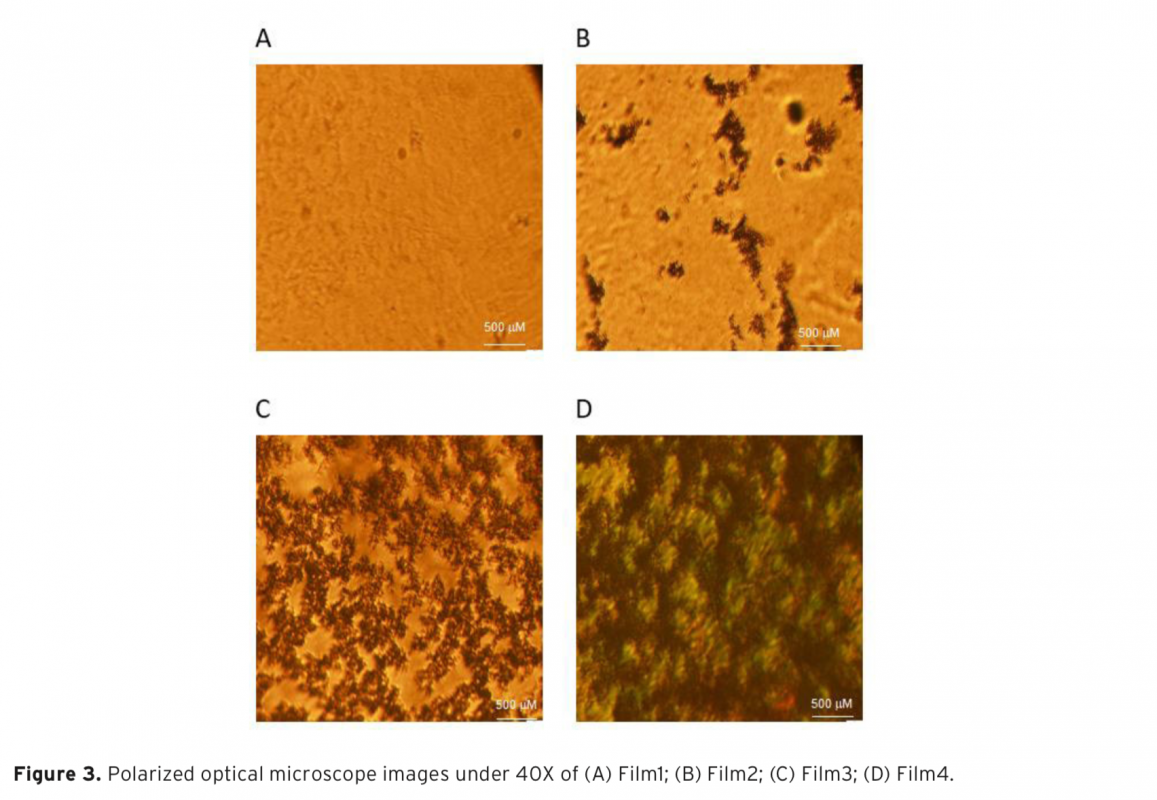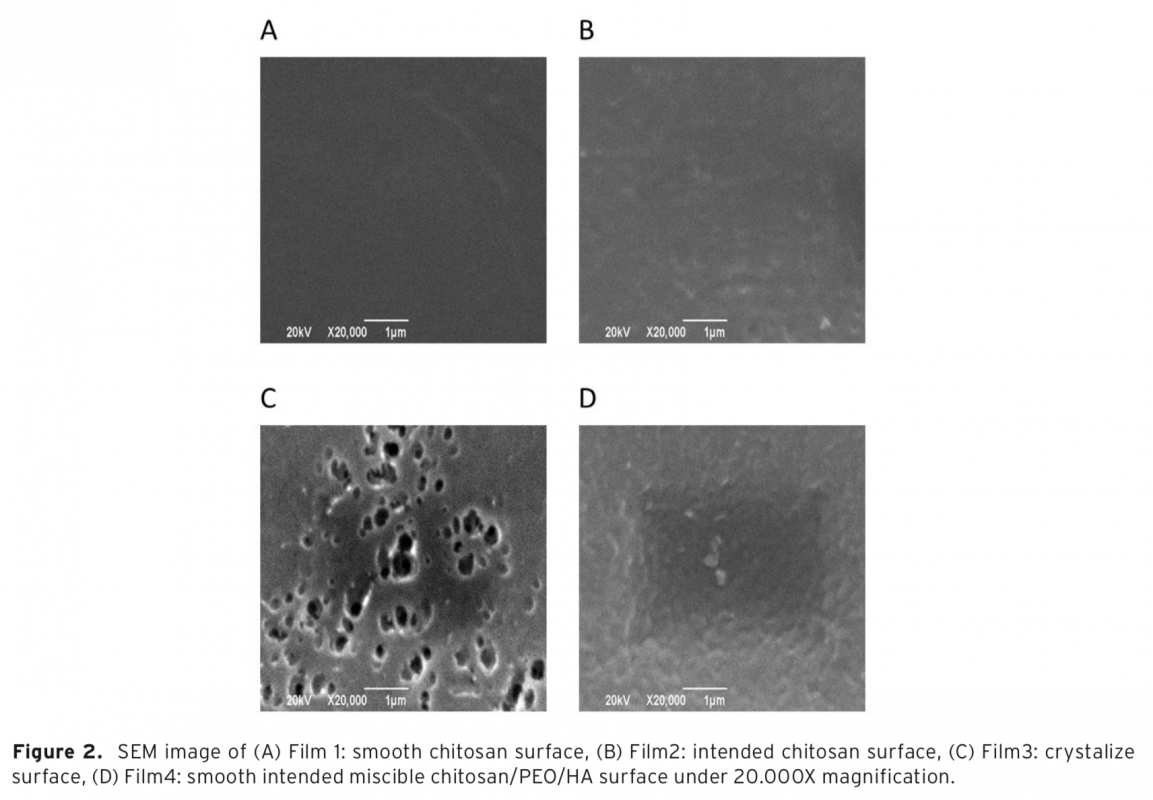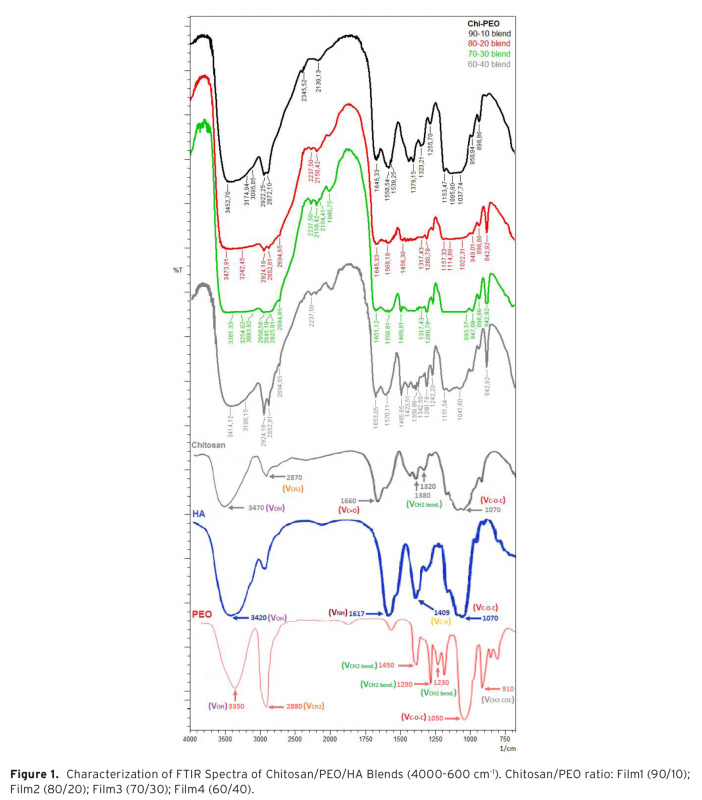Biopolymer-based blends can be used within the form of cast film in various proportions with polyethylene oxide (PEO) in order to obtain more durable and biocompatible surfaces. Chitosan and hyaluronic acid (HA) are the most used biocompatible biopolymers for the production of films. On the other hand, as a synthetic polymer, PEO has been mostly used to improve durability of the surfaces by using in various molecular weights. This study was carried out to determine the effect of HA on the chitosan and PEO biopolymer blends different from reported Chitosan/PEO film surfaces in the literature. FTIR studies presented no any polycationic amine groups belong to chitosan through the surface of four films in different compositions after casting. Surface morphology were determined by SEM, EDS and polarized microscopy analyses. Surface morphology was observed as well-oriented spherulitic crystallization by the increasing amount of PEO in the films. Astonishingly, it was proven that HA improved the biocompatibility feature of PEO-rich surfaces which were tested by using healthy mouse fibroblast cell lines, L929 (ATCC CCL-1).
Biyopolimer esaslı harmanlar, polietilen oksit (PEO) ile daha dayanıklı ve biyouyumlu yüzeyler elde etmek için çeşitli oranlarda dökme film formunda kullanılabilir. Kitosan ve hiyaluronik asit (HA), film üretimi için en çok kullanılan biyouyumlu biyopolimerlerdir. Öte yandan, sentetik bir polimer olarak, PEO çeşitli molekül ağırlığında yüzeylerin dayanıklılığını arttırmak için çoğunlukla kullanılmaktadır. Bu çalışma, literatürde bildirilen Kitosan/PEO film yüzeylerinden farklı olarak, kitosan ve PEO biyopolimer karışımları üzerine, HA’nın etkisini belirlemek amacıyla yapılmıştır. FTIR sonuçları, farklı oranlarda dört filmin, yüzeyi boyunca kitosana ait herhangi bir polikatyonik amin grubunun dökümden sonra sunmamıştır. Yüzey morfolojisi SEM, EDS ve polarize mikroskop analizleri ile belirlenmiştir. Filmlerde artan PEO miktarı ile birlikte iyi yönlendirilmiş küresel kristalleşme yüzey morfolojisi gözlenmiştir. Şaşırtıcı olarak, HA’nın sağlıklı fare fibroblast hücre hattı, L929 (ATCC CCL-1) kullanılarak test edilen PEO bakımından zengin yüzeylerin biyouyumluluk özelliğini geliştirdiği kanıtlanmıştır.




Download Article in PDF (1.2 MB)